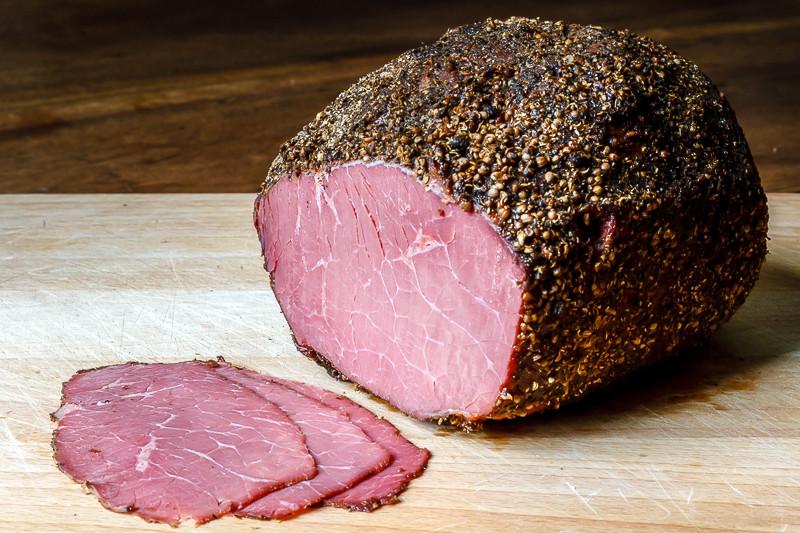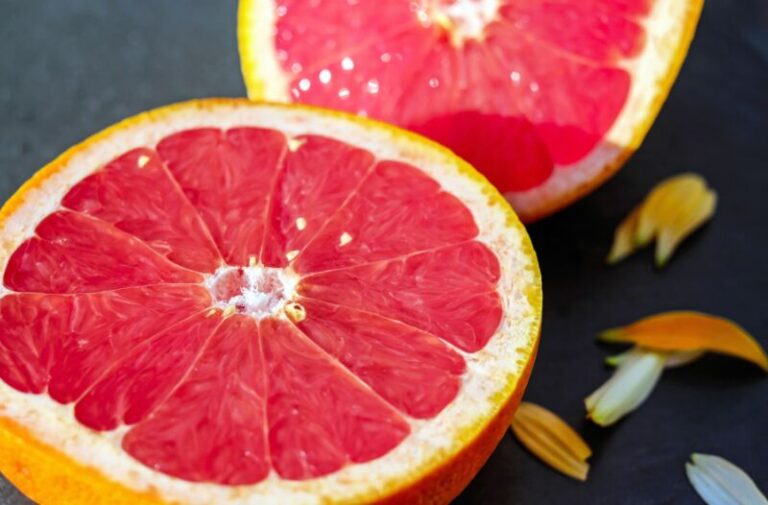Is Pastrami Beef or Pork? Everything You Need To Know
Pastrami has long been a favorite among meat lovers around due to its unique combination of intense seasoning, curing, and smoking. Pastrami, originally from Eastern European Jewish cuisine, is now widely available in delis and sandwich shops because to its distinctive flavor. But there’s a question that often arises among curious food lovers: Is pastrami beef or pork? In this article, we will delve into the origins, history, and preparation of pastrami to uncover the truth behind this culinary mystery.
What Is Pastrami? How Is It Made?
Pastrami is a cured and highly spiced beef that has gained popularity in many different cuisines throughout the globe. It has a specific position in traditional meals and deli sandwiches in Eastern European Jewish cuisine, to which it is closely linked.

Making pastrami is a multi-stage procedure. The base ingredient is usually beef, however turkey and lamb are also used in certain versions. Beef plate and beef navel, sometimes known as beef belly, are popular cuts for making pastrami because of their marbling and suppleness.
Pastrami begins with a spice rub consisting of black peppercorns, coriander seeds, garlic, paprika, and other flavors that are applied to the meat before it is cured. The meat gets its distinctive taste from the rub. After being seasoned, the meat is allowed to cure for some time so that the seasoning may soak in and the flesh can be preserved.
Pastrami, after cured, may be cooked in either a smoker or a steamer. Meat is smoked to provide a robust smokey taste by being subjected to low temperatures and smoky conditions. The flesh becomes soft and juicy when steamed because of the steam’s effect on the meat’s surface tension.
After the pastrami has been cooked thoroughly, it is sliced thinly so that it may be used in a variety of dishes. Most people think of pastrami when they picture a deli sandwich, which would typically include Swiss cheese, sauerkraut, pickles, and mustard spread over a thick slab of pastrami on rye bread or bagel. A well-known example of a pastrami sandwich is the Reuben, which typically consists of pastrami, sauerkraut, Swiss cheese, and Russian dressing.
Pastrami is not only delicious on its own, but also has many applications in the kitchen. Breakfast foods like omelets and hash may benefit from its inclusion, as can pizza and salad, and even more experimental dishes. Those looking for something hearty and unique in flavor will get what they’re looking for in this dish.
Is Pastrami Beef or Pork?
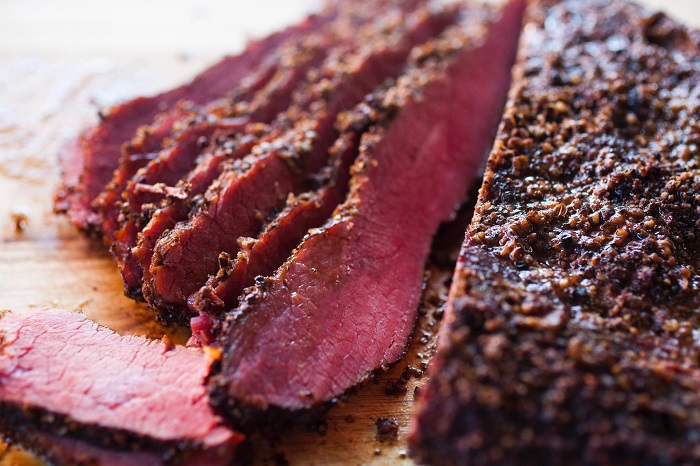
While beef is traditionally used, various types of meat may be used to make pastrami. Beef, and more especially beef navel (beef belly) or beef plate, is the original and most popular option for pastrami. Pastrami’s taste and texture come from the marbling and suppleness of these slices.
Beef pastrami’s strong taste comes from its curing and smoking processes. Meat is rubbed with a spice mixture, left to cure for a certain amount of time, and then smoked or steamed to create the desired flavor and texture. A smokey depth of flavor is added during the smoking process, and the meat is well-seasoned and maintained thanks to the curing procedure.
Although beef is traditionally used, pastrami made with other meats has becoming more popular. For those looking for a slimmer option that yet delivers on the classic pastrami taste, turkey pastrami is a great choice. Lamb pastrami’s flavor profile is distinctive and will appeal to people looking for something other than traditional pastrami made from beef.
It’s important to remember that pig pastrami also occurs, but at a far lower frequency than beef pastrami. Similar to beef pastrami, pork pastrami is cured and smoked, however instead of using beef it is created from pig. Traditional pastrami, however, almost always uses beef for both cultural and nutritional reasons.
The History of Pastrami
Pastrami’s roots may be traced back to the late 19th century, when ethnic Romanians and Moldavians arrived in the United States and carried with them their culinary traditions. As beef became more widely available and inexpensive, it replaced goose and mutton in traditional pastrami recipes. Jewish delis in New York City’s boroughs of the Lower East Side and Upper West Side were instrumental in the rise to fame of pastrami.
What Cuts of Meat are Used to Make Pastrami

Pastrami is traditionally made from beef trimmings, although versions employing pork, chicken, and even fish are also prevalent. Beef navel (beef belly) and beef plate are two of the most common cuts used to make classic beef pastrami due to their excellent taste, tenderness, and compatibility for the curing and smoking procedure.
- Beef Navel (Beef Belly): This well-marbled and tasty cut comes from the cow’s abdominal region and is also known as beef belly or navel end. Pastrami is highly regarded for its succulent texture and flavorful fat layers. Beef pastrami made from the navel cut is prized for its tenderness and rich fat marbling.
- Beef Plate: Another common cut of meat used to make pastrami is beef plate, which comes from the cow’s lower rib area. Its signature marbling contributes to a more flavorful and juicy final product. The beef plate cut provides an excellent balance of lean and fat, making for a juicy and flavorful pastrami.
Pastrami is traditionally made from meat that has been chosen for certain properties. Even after curing and smoking, the marbling in the flesh keeps the pastrami moist and full of flavor. The fat level is also important since it makes the final pastrami rich and soft.
Pastrami is often made using a cow navel or beef plate, but other cuts or even other species of meat, such turkey, lamb, or hog, may be used to make interesting and tasty versions. These substitute pastramis each have their own unique qualities and flavor profiles, making them suitable for those with a wide range of tastes and dietary restrictions.
Non-Beef Pastramis
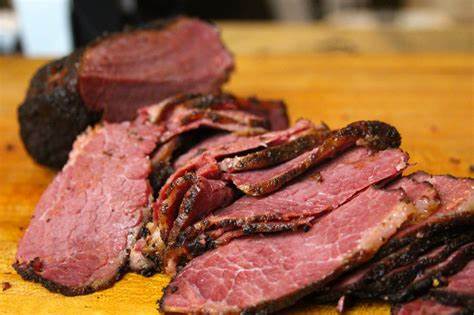
Pastrami produced from other meats, such as turkey or chicken, has become more popular in recent years as a tasty alternative to the traditional beef kind. Let’s have a look at several alternatives to traditional pastrami:
- Turkey pastrami: If you’re looking for something lighter and leaner, turkey pastrami is a great choice. To mimic the taste and texture of classic beef pastrami, turkey breast is cured and seasoned before being smoked or steamed. Turkey pastrami provides the same iconic pastrami experience with a more subtle flavor profile.
- Lamb pastrami: Unlike regular beef pastrami, lamb pastrami has its own unique flavor profile. Lamb is cured, seasoned, then smoked or steamed to create this dish. Common pieces used include the shoulder and the leg. Lamb pastrami, with its slightly gamier flavor, is a welcome departure from traditional pastrami.
- Vegetarian and Vegan Alternatives: Plant-based diets are becoming more common, and in response, vegetarian and vegan substitutes for meat items like pastrami have appeared. Plant-based proteins like seitan, tempeh, and tofu are often used as the foundation for these substitutes. The meats are prepared in a manner like conventional pastrami by seasoning, curing, and occasionally smoking them. Meat-free pastrami choices are available for those who want to enjoy the flavor without consuming any animal products.
These alternatives to beef pastrami have their own distinct flavor profiles, textural characteristics, and culinary potential that need to be highlighted. They make it possible to provide a greater variety of pastrami, which may cater to a wider range of dietary needs and cultural preferences.
These non-beef pastramis, such as turkey, lamb, or vegetarian and vegan variants, provide intriguing possibilities for gastronomic discovery, and enable people to taste the essence of pastrami in novel and interesting ways.
The Difference Between Pastrami and Corned Beef
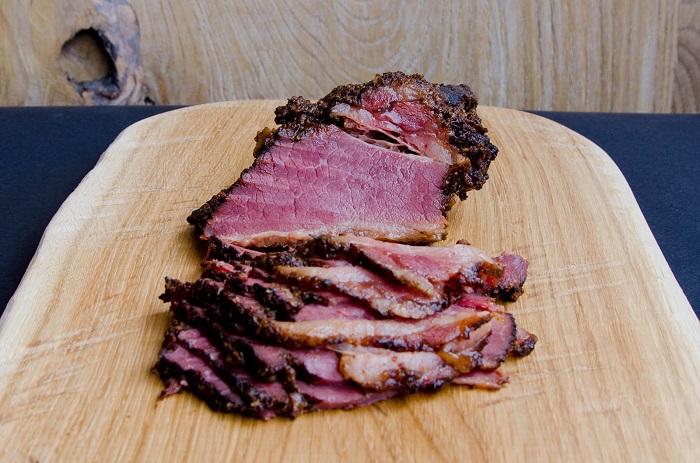
Popular deli meats like pastrami and corned beef each have their own unique qualities, tastes, and ways of cooking. They have certain similarities, but there are also key distinctions:
Preparation Method
The manner of cooking is the main distinction between pastrami and corned beef. Beef brisket or similar pieces are submerged in a brine solution containing big grains of salt, spices, and typically pink curing salt to create corned beef, which is then cured for many weeks. Brine the beef for a long time, anything from a few days to a few weeks. Corned beef acquires its signature saltiness and pink color during the brining process.
On the other hand, beef or other cured meat forms the foundation of pastrami, which is then covered with a spice rub including black peppercorns, coriander seeds, garlic, and paprika. Pastrami gets its signature taste and texture from being smoked or steamed after the curing process. Pastrami is smoked to provide a smoky flavor and then steamed to make it soft and juicy.
Flavor Profile
The brining procedure gives corned beef its characteristic salty and sour taste. The salinity is typically tempered by the addition of spices like cloves, allspice, and mustard seeds to the brine. Corned beef, in contrast to pastrami, is often more soft and moist in texture.
In contrast, the taste profile of pastrami is hearty and multifaceted. Pastrami’s peppery, smoky, and mildly spicy flavor comes from the spice rub and the smoking or steaming procedure. The curing and smoking processes give it a tougher structure than corned beef, along with a pleasing chewiness and depth of tastes.
Usage and Culinary Applications
Both corned beef and pastrami have several uses in the kitchen. Famous Reuben sandwiches have thinly sliced corned beef sandwiched between layers of sauerkraut, Swiss cheese, and Thousand Island dressing on rye bread. Corned beef and cabbage, hash, and breakfast sandwiches all include the meat.
On the other hand, pastrami has become famous thanks to its use in deli sandwiches. Pastrami sandwiches, often made with rye bread, mustard, and pickles, are a popular option. Pizzas may be topped with pastrami, it can be used as an element in savory breakfast meals like omelets and hash, and it can even be used as a tasty addition to salads and pastas.
While both pastrami and corned beef are often used in deli sandwiches, these two deli meats are prepared and taste quite differently. Pastrami, on the other hand, is cured with a spice rub and often smoked or steamed, adding a peppery and smoky flavor, as opposed to the salty and acidic flavor of corned beef, which results from the brining process. Different cuts of meat have different flavors and textures, making them ideal for a wide range of dishes.
Serving Suggestions for Pastrami
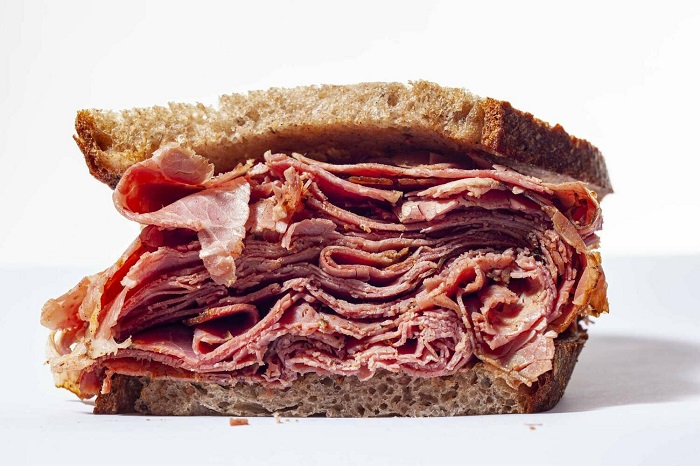
Pastrami’s versatility extends beyond deli sandwiches, making it a perfect ingredient for creative culinary endeavors. Here are some serving suggestions to inspire you on how to enjoy pastrami:
- Classic Pastrami Sandwich: The classic pastrami sandwich is a must-try. Pile thinly sliced pastrami on rye bread or a bagel, and add your favorite condiments and toppings. Common additions include Swiss cheese, sauerkraut, pickles, and mustard. The result is a delicious and satisfying deli-style sandwich.
- Pastrami on Bagels: For a delightful breakfast or brunch option, serve pastrami on a toasted bagel. Spread cream cheese on the bagel and layer it with slices of pastrami. Add fresh tomato slices, red onion, and capers for a flavorful combination.
- Pastrami Hash: Transform your breakfast or brunch by incorporating pastrami into a hearty hash. Sauté diced potatoes, onions, and bell peppers in a skillet until golden brown. Add chopped pastrami and cook until heated through. Serve with fried eggs on top for a comforting and flavorful meal.
- Pastrami Pizza: Take your pizza game to the next level by topping it with pastrami. Spread tomato sauce on your pizza dough and layer it with mozzarella cheese. Add sliced pastrami, red onion, and your choice of additional toppings like olives or bell peppers. Bake until the cheese is melted and bubbly, and enjoy the unique flavors of pastrami-infused pizza.
- Pastrami Salad: Create a delicious and satisfying salad by incorporating pastrami. Start with a bed of mixed greens or your favorite salad base. Add sliced pastrami, cherry tomatoes, cucumbers, red onion, and crumbled feta cheese. Drizzle with a tangy vinaigrette or a creamy dressing for a flavorful and hearty salad.
- Pastrami Wraps or Roll-ups: Create a portable and tasty meal by rolling pastrami with your favorite fillings in a tortilla or lavash bread. Spread cream cheese or a flavored spread on the tortilla, and layer it with pastrami, lettuce, sliced tomatoes, and other vegetables. Roll it tightly and slice it into bite-sized pieces for a convenient and delicious snack or lunch option.
- Pastrami Panini: Grill up a delicious pastrami panini by layering pastrami, Swiss cheese, caramelized onions, and Dijon mustard between slices of crusty bread. Press the sandwich in a panini press or grill it in a skillet until the cheese is melted and the bread is toasted. Enjoy the warm and melty combination of flavors.
Conclusion
Pastrami is primarily made from beef, specifically the beef navel or plate cuts. Its origins in Eastern European Jewish cuisine have evolved over time, and today, pastrami is celebrated globally for its unique flavor and texture. While variations using other meats exist, beef pastrami remains the most popular choice.
Whether enjoyed in a classic deli sandwich or incorporated into innovative dishes, pastrami continues to captivate food enthusiasts with its savory allure. Explore the world of pastrami, embrace its history, and savor the culinary delights it has to offer.
